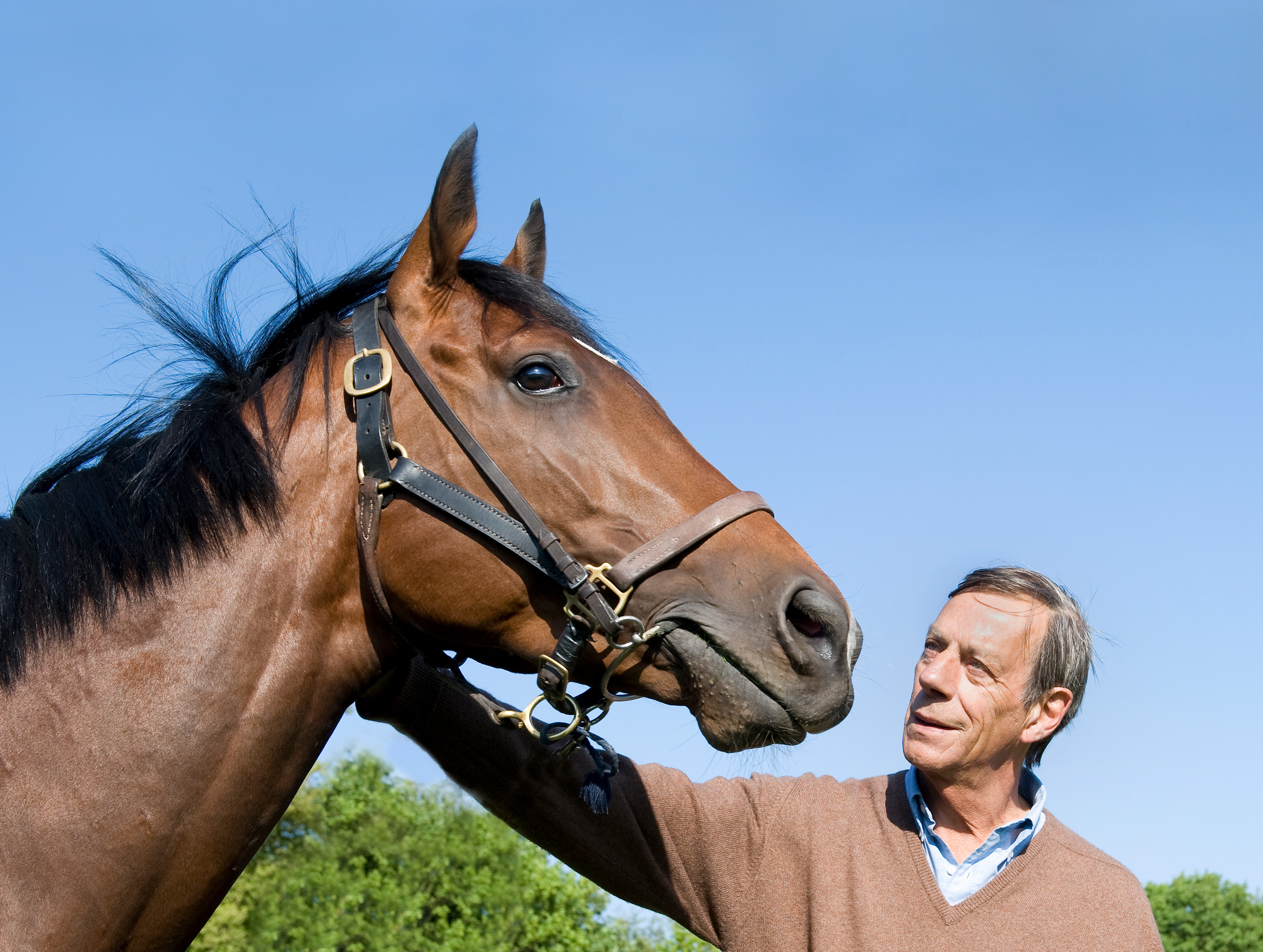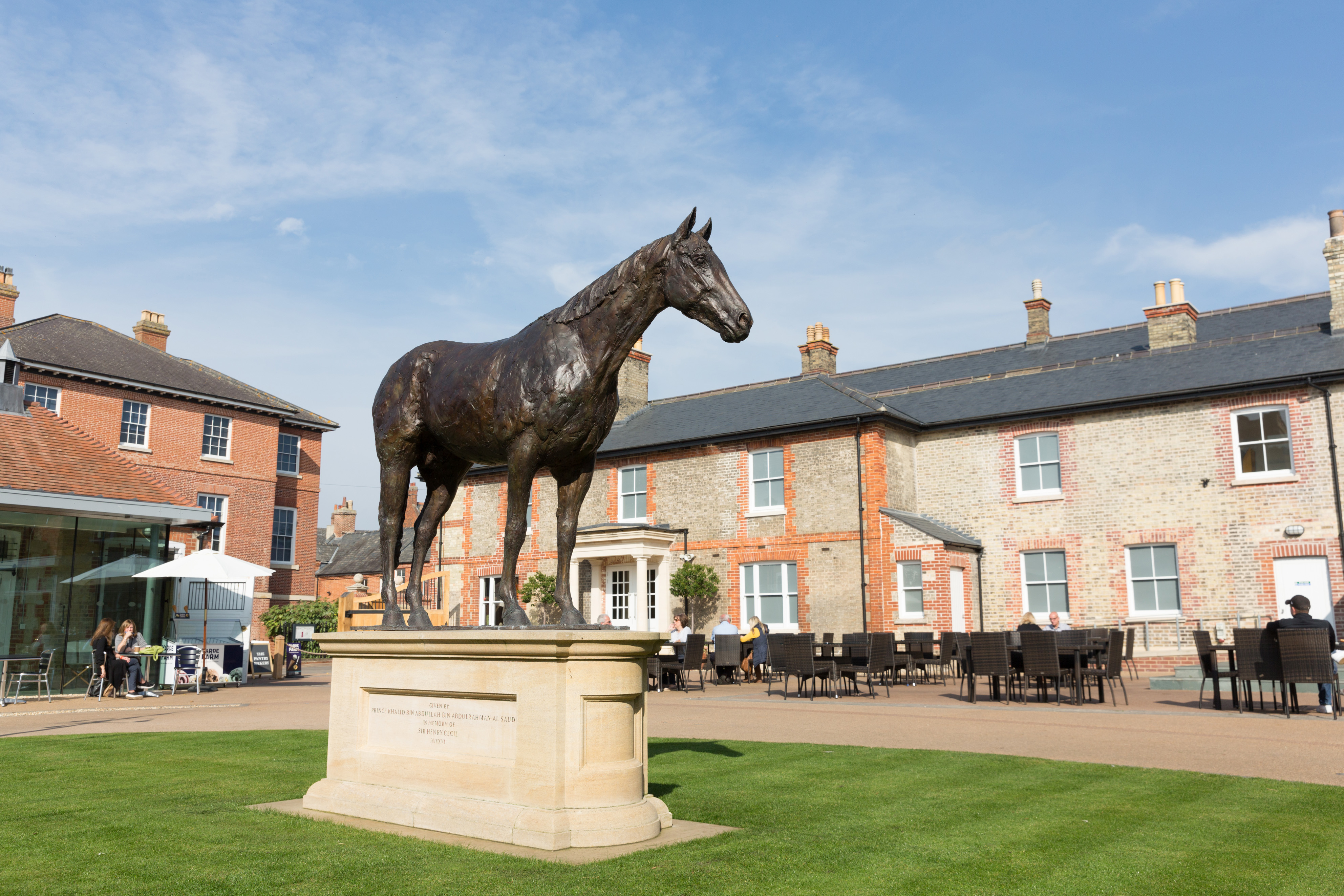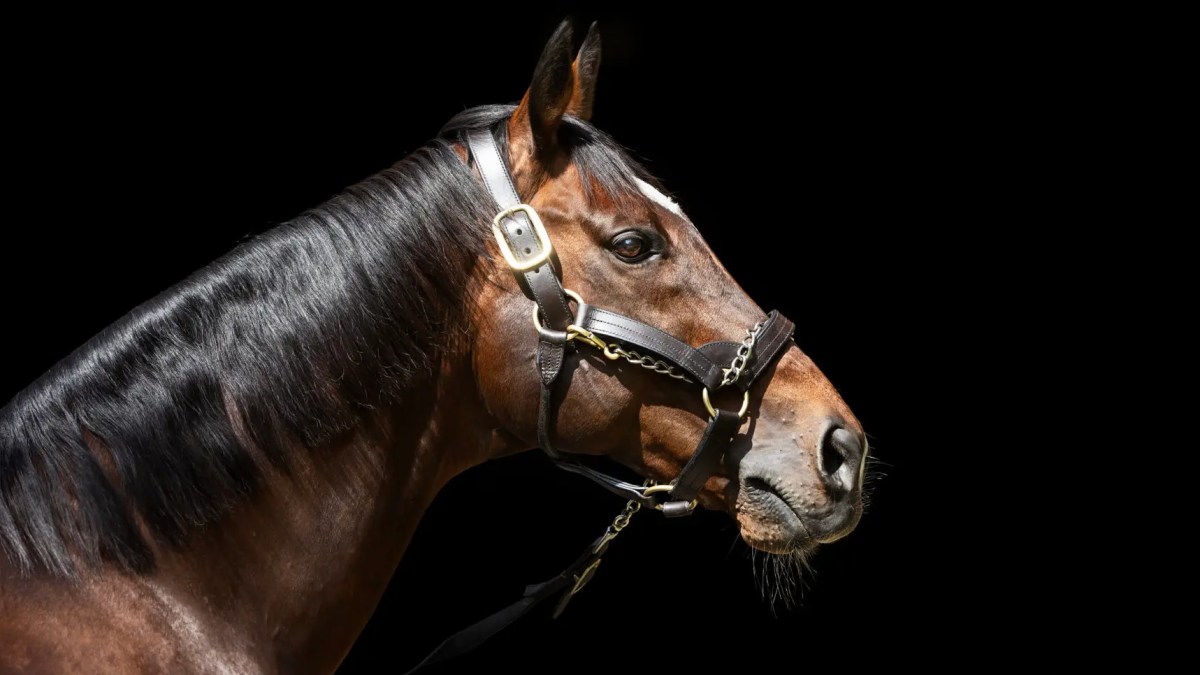For racing fans, the name Frankel is the equivalent of the mythical Pegasus. But the unbeaten superstar of the sport, who was retired from the track in 2012 and is now 17, doesn’t reside on Olympus. Instead he can be visited in his stable in Newmarket courtesy of Newmarket Tours. The bad news is that Frankel is only available to the public eight times a year — for a group limited to 24 — and tickets are snapped up faster than an Oasis reunion. For aficionados, this really is the hottest ticket in town.
The legend of Frankel is for ever tied with that of his trainer, the late great Sir Henry Cecil. Champion trainer ten times between 1976 and 1993, the charismatic Cecil’s career had declined with the combination of a fallout with Sheikh Mohammed, two divorces (he married for a third time in 2008) and then a gradual physical decline caused by stomach cancer.
From a peak of having about 200 horses in his care and for decades churning out over 100 winners a year, Cecil was down to about 50 and in 2005 he hit rock bottom with just 12 winners. The following year he was diagnosed with stomach cancer and, but for the staunch support of his leading owner, Prince Khalid Abdullah, he would surely have retired.
Cecil had remained a darling of the racing public throughout, though, and it was Abdullah who provided Cecil with his greatest legacy when sending Frankel to his stables as an unraced two-year-old colt back in 2010. Frankel went on to win all 14 races he took part in, from 2010 to 2012, ten of them at the highest level, as he went from strength to strength while his once-dashing trainer looked ever more frail.

Sir Henry Cecil with Frankel in 2011
CHRIS SMITH/GETTY IMAGES

Frankel’s statue at Newmarket
LO CHUN KIT/GETTY IMAGES
Many believe that Frankel was all that kept Cecil going in his final years and the trainer finally succumbed to the illness in 2013, his life’s work achieved. Those lucky enough to buy the golden Frankel tickets can still be a part of that great legacy. A half-day tour costs just £110, while a full-day version is £210. There are four of each a year. The full-day events start at 8am and are hosted by Cecil’s widow, Lady Cecil, who both acts as your tour guide — adding her personal Frankel memories — and hosts a two-course lunch at the Bedford Lodge Hotel on the outskirts of town. The morning takes in a behind-the-scenes visit to Newmarket’s Rowley Mile Course (the town also has the July Course), a visit to the gallops and a tour of a trainer’s yard before lunch.
It is a 2pm start for the half-day tour, meeting at the National Horseracing Museum in the middle of Newmarket. The tour bus is ageing but the journey times are short and the guides, with their years of experience in the sport, are brilliant. The former jockey Larry Bowden steered my bus and delivered a flawless commentary with a hint of a Suffolk accent. Every stud and training yard is accurately reeled off as you drive past, with historical facts about Newmarket and plenty of other little-known gems sprinkled in, all delivered with a dash of humour.
• Read more luxury reviews, advice and insights from our experts
First stop was the top of Warren Hill gallop, close to where Frankel was trained at Cecil’s Warren Place base, and offers views across the town. It is a scene that has scarcely changed since Newmarket racecourse was founded by King Charles II back in 1636.
Then comes the main event as you arrive at Banstead Manor Stud, which has been Frankel’s home since his retirement from racing at the end of 2012.
Not every top racehorse enjoys success at stud, with several Derby winners in recent years failing to produce progeny with the requisite ability and ending their careers in far-flung outposts. Frankel has proved exceptional, siring a seemingly endless list of top-class horses. His racing career earned £3 million but breeding is where the real money is. He is visited by about 150 mares during the breeding season, with their owners paying £350,000 a time for the privilege, earning Abdullah’s Juddmonte Farms about £52.5 million a year.
Given those numbers, it is no surprise that the surroundings are opulent, with well-appointed brick stables set among manicured lawns surrounded by pristine hedges that hide the rolling paddocks behind. If there is so much as a blade of grass out of place, it is not apparent.
Banstead Manor houses seven stallions — one of them being Chaldean, a son of Frankel who followed his father by winning the 2,000 Guineas (one of five classics that are run each year in Britain).
• The Queen, horse racing and me, by one of Britain’s best trainers

Five stallions standing at Juddmonte Farms’ Banstead Manor Stud
BRONWEN HEALY PHOTOGRAPHY

Frankel is hand-grazed by Rob Bowley
DARREN TINDALE/BRONWEN HEALY PHOTOGRAPHY
These are not pets, though, that you can pat on the nose in their stables. They are working horses. Thoroughbreds are by nature flighty and stallions often have plenty of attitude. Each stallion has their own personal groom, with whom they need to gel, and Frankel has been looked after by Rob Bowley since he arrived there in November 2012.
The stallions are displayed, one at a time, by their grooms as we are given a running commentary by Henry Bletsoe as to both their racing career and their quirks. Frankel might be the main draw, but we are told that he is not the boss at the stud, with Oasis Dream, who is now 25, still demanding to be first in line. He really does have attitude, despite his advancing years, but looks magnificent with his coat gleaming in the sunshine.
Then the main event saunters into view. Frankel, with his four white socks and distinctive crown-shaped white mark on his forehead, is rather more relaxed.
He stands obediently as the group looks on in awe at this magnificent specimen, who is prepared to have pictures taken as long as a timely supply of carrots is provided by Bowley, who chats to him throughout.
After a few minutes, though, his head starts nodding with ever greater frequency as boredom sets in — why have I been brought out of my stable when there is no mare to visit? He saunters back to his stable and disappears from view.
• Can Gen Z save racing? Traditionalists have their doubts
The tour ends with a visit to the breeding barn, with our guide trying to find appropriate words to describe how things work with two children in attendance, much to the amusement of the rest of the group.
Goodie bags are handed out, in classy Frankel-design bags, which include much sought-after Frankel caps, leaving no doubt as to who is the star of the show. The trip is rounded off with tea and scones back at the museum at 4pm, which allows the chance for any lingering questions to be answered.
Newmarket Tours was set up in 2015 and is a not-for-profit organisation that supports tourism in the “Home of Horseracing”. It is doing invaluable work for the town, operating six days a week and entertaining 10,000 visitors last year.
Those unable to buy the Frankel tickets have many other options to choose from, starting from as little as £16.50 (£5 for under-16s) for a 90-minute trip to the National Stud, whose four stallions include the triple Ascot Gold Cup winner Stradivarius. Other studs, trainers’ yards and behind-the-scenes access on race days at Newmarket are all available depending on your budget.
There are about 3,000 horses in training in Newmarket, but Frankel, who retired in 2012, remains the town’s biggest asset. A recent TV advert has a voice-over of a horse telling viewers that “the Goat is a horse”. It goes on to remind “mere humans” that a horse can “sprint 100 metres in five seconds — with one of you on my back”. After centuries of breeding thoroughbred racehorses to become ever faster, Frankel is the best yet. The chance to see him in the flesh once again is too good to miss.
